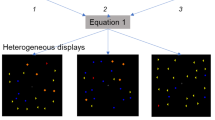Conclusion
The moral is plain enough. For purposes of distinguishing an object from surroundings of similar lightness, one needs to have a receptive system that is sensitive to small wavelength differences. For signalreception and identification purposes, one needs to have a receptive system engendering a few basic categories that can ignore minor variations and lump stimuli together into a small number of salient, memorable equivalence classes. With elegant economy, our visual systems does both by drawing on the same neural resources. The system of qualitative classification that this involves need not match any analogous set of structures outside the organism in order to provide real advantages to the animal that uses it. The hues that we human beings see express our system of coding wavelength information rather than some set of properties of reflecting surfaces. But the form of the coding is not just a bit of non-functional adornment freeloading on the serious business of visual information processing. We must see it, rather, as supplying the means by which a rich amount of sensory information can be rapidly and efficiently represented by cognitive machinery of limited capacity [Miller, 1957]. With color, the medium is the message.
Similar content being viewed by others
References
Berlin, B. and Kay, P.: 1967, Basic Color Terms (University of California Press, Berkeley and Los Angeles).
Boynton, R. M.: 1987, ‘Evaluating Color Appearance Using the OSA Uniform Color Scales Samples and a Color-Naming Method’, Color Appearance, Optical Society of America Technical Digest Series, 15.
Boynton, R. M. and Olson, C. X.: 1987, ‘Locating Basic Colors in the OSA Space’, Color Research and Application, v. 12, no. 2, 94–105.
Burtt, E. H. (ed.): 1979, The Behavioral Significance of Color (Garland STPM Press, New York and London).
Christ, R. E.: 1975, ‘Review and Analysis of Color Coding Research for Visual Displays’, Human Factors, 17, 542–570.
Hardin, C. L.: 1988, Color for Philosophers: Unweaving the Rainbow (Hackett Publishing Company, Indianapolis).
Hardin, C. L.: 1990, ‘Why Color?’ in Brill, M. (ed.): 1990, Perceiving, Measuring and Using Color, The Society of Photo-optical Instrumentation Engineers, 1250, 293–300.
Harnad, S. (ed.): 1987, Categorical Perception (Cambridge University Press, Cambridge and New York).
Humphrey, N. K.: 1972, ‘“Interest” and “Pleasure”: Two Determinants of a Monkey's Visual Preferences’, Perception 1, 395–416.
Jacobs, G.: 1981, Comparative Color Vision (Academic Press, New York), ch. 6.
Lennie, P.: 1984, ‘Recent Developments in the Physiology of Color Vision’, Trends in Neurosciences, v. 7, n. 7, 243–249.
Lythgoe, J. N.: 1979, The Ecology of Vision (Oxford University Press, New York and London).
Miller, G. A.: 1957, ‘The Magic Number Seven, Plus or Minus Two: Some Limits on Our Capacity for Processing Information’, Psychological Review, 63, 81–97.
Mollon, J. D.: 1989, ‘“Tho' She Kneel'd In That Place Where They Grew ...”: The Uses and Origins of Primate Colour Vision’, Journal of Experimental Biology, 146, 21–38.
Nagy, A. and Sanchez, R.: 1988, ‘Color Difference Required for Parallel Visual Search’, Optical Society of America Technical Digest Series 11, 42.
Rosch, E.: 1975, ‘The Nature of Mental Codes for Color Categories’, Journal of Experimental Psychology: Human Perception and performance 1, 303–322.
Thompson, E., Palacios, A. and Varela, F. J.: 1992, ‘Ways of Coloring: Comparative Vision as a Case Study for Cognitive Science’, Behavioral and Brain Sciences, v. 15, n. 1, 1–26.
Author information
Authors and Affiliations
Additional information
This is a revised version of Hardin [1990], with permission of SPIE.
Rights and permissions
About this article
Cite this article
Hardin, C.L. The virtues of illusion. Philos Stud 68, 371–382 (1992). https://doi.org/10.1007/BF00694852
Issue Date:
DOI: https://doi.org/10.1007/BF00694852




